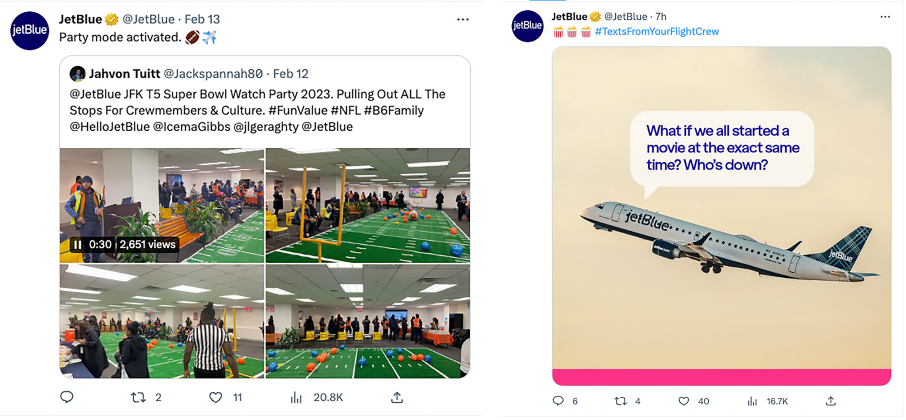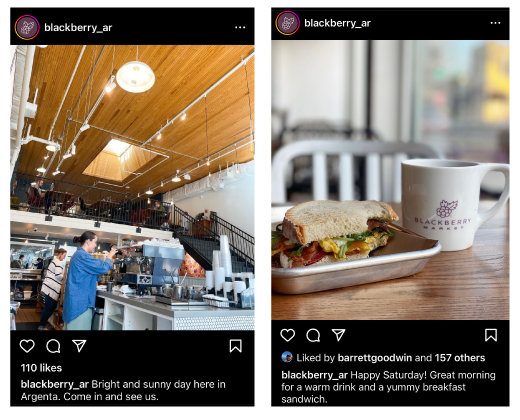When it comes to school social media, frequency matters.
A good social media strategy for schools can be hard to pin down—so we break down the what, when, and why of posting.

Social media marketing for schools can be a tricky game to play. It’s often difficult to pin down the what, when, and where of posting—so difficult that some districts don’t even bother. But social media can be an integral tool for communicating vital information to your stakeholders. Finding the right way to use social media will help you tell your story while building an audience who will stay connected to and advocate for your schools.
But let’s be honest: There is no perfect social media strategy for schools. Like most things that exist on the internet, social media trends ebb, flow, and evolve—sometimes quickly and without making much sense. In fact, private sector companies have spent a considerable amount of time and money trying to find just the right times and places to share content. “If you post too infrequently, your audience will forget that you exist, and you will quickly fade into the deep dark recesses of their minds,” writes private sector marketer Neil Patel. “However, if you are posting too often, you will become a complete nuisance, and they will dread seeing your posts overcrowding their feed."
For schools, the stakes are naturally higher. When you serve a community’s children, it’s especially crucial to pin down your content and the frequency with which you share it. That’s because a solid social media strategy for schools is a way to share not only your district’s story but also messages of timely importance. Whether you’re announcing a snow day or providing details about an upcoming bond vote, you don’t want families, students, and staff to lose your messages in an endless stream of social media content.
But before we get into the nitty-gritty of social media posting frequency, let’s break down what a successful social media strategy for schools looks like—and why posting frequency isn’t actually as simple as it may sound.
When it comes to social media for schools, quality beats quantity.
Ask any frequent social media user and they’ll tell you: What you post matters a lot more than how often you post. So before fine-tuning the frequency of your social media sharing, it’s important to assess your content. Audiences are looking for posts that engage them, that give them insights into how your schools work. They’re looking for stories.
We probably don’t have to tell you that storytelling is one of the most powerful tools at your disposal. Research by cognitive psychologist Jerome Bruner suggests that stories are 22 times more memorable than facts alone. Stories can clarify complex ideas. They also have the power to elevate boring subject matter into something engaging and interesting. What’s more, 92% of people say they prefer marketing that comes in the form of a story.
But most importantly, stories are a catalyst for connection. “Stories are the way that we connect with each other,” says Hilary Trudell, founder of storytelling organization The Yarn. “You want to connect with your audience, whether it’s your parents, your kids, or your school board. You want to create empathy within that space. Stories are an essential part of what creates a community.”
So when it comes to social media for schools, we recommend you prioritize building a strong foundation of connection and community first and foremost. This is not only important for marketing your schools to potential new students and staff members, but also for growing your following and earning new advocates. If you’re posting engaging content, people will keep paying attention, and they’ll keep sharing your best stories.
For a crash course on how to captivate your audience with stories, check out schoolceo.com/storytelling
With any social media strategy for schools, consistency is key.
Building a foundational line of communication with your audience by sharing engaging content is just one piece of the social media puzzle. The next essential step is being consistent with your posts. If your followers aren’t hearing from you consistently, you can’t expect them to keep tuning in.
But we’re not advising you to overwhelm your stakeholders with unnecessary minute-by-minute updates. Posting too much information too often can also cause your audience to tune you out. A little can go a long way if you’re posting the right content. Sharing consistent updates about a bond campaign is great, for example, but inundating your social media channels with tons of technical information is just going to turn people away.
Being consistent also shows your community that you have a plan—that you’re in control. If you post about a bond vote or other important event only the day before it happens, what’s that saying to your stakeholders? Staying proactive and thoughtful with the way you share any information is vital, and consistency is a big part of that. By consistently sharing relevant information, you’ll keep your community in the loop and grow support among your district’s stakeholders and advocates. That, in turn, will help you shape the narrative surrounding your schools.
How often should you post?
Private sector brands have had to fine-tune their advertising and messaging to reach the right consumers at the right times. And though most private sector companies aren’t serving communities the way schools do, they’re using many of the same communication channels. So why not borrow some ideas from brands who have played the game, won their audiences over, and calibrated the frequency of their posts to perfection?
According to a 2022 study from Sprout Social, 74% of consumers think brands should post one or two times per day. Sprout also notes that since each platform has its own unique algorithm, “more frequent posting might not be a bad idea.” But which platforms you should choose depends on your schools. The decision really comes down to two factors: the audience you’ve built and the audience you want. You may need to audit your district’s social media following as it stands, platform by platform, to determine where your biggest audience already exists. Then you’ll know not only where certain messages will have the most impact, but also where you need to rethink your strategy and grow a greater following.
An audit of your social media can also provide valuable insights into which times of day are best for posting specific content. Does a video clip shared on a weekday at 5 p.m. get more likes and comments than any other post? Try posting at that same time consistently to see if that is, in fact, when your followers are most likely to interact with your content. If you have no idea what times work best, try staggering your post times and comparing your engagement metrics. This will help reveal when your audience is most actively engaged with your feeds.
Many private sector marketers claim to have pinpointed the right times of day or night to post certain content, but in reality, the “best time” to post is constantly evolving. Focusing too much on when to post pulls attention away from what’s most important: sharing high-quality content consistently. You’ll have to find the best schedule for you, but we strongly encourage experimenting with various types of posts to see how your audience responds.
In terms of where to post, many marketers suggest companies focus on just one or two social media channels for their messaging—but schools may not have that luxury. When you want to reach your community, market your schools, or provide important information, being everywhere you can is vital. But take note: While being on multiple platforms is a good idea, you need a solid strategy for keeping your messaging consistent across these platforms—whether that means using social media management software or creating a handbook for who posts what on each channel and when.
Ah, Facebook. The social network that changed everything…for better or worse. It’s hard to imagine a time when we didn’t have likes and comments and friend requests, isn’t it? Maybe because of its age and cultural impact, Facebook is still the most popular social platform on the planet—and that doesn’t seem to be changing anytime soon. According to Statista, Facebook had a combined 266 million monthly active users in the United States and Canada at the end of 2022.
So how often should you be posting on your district or school Facebook page? Studies on posting frequency across private sector brands can give us some insight—though they’re not all in complete agreement. According to Sprout Social, “Across all industries, brands publish an average of five Facebook posts per day.” But research by Hubspot found that when brands with fewer than 10,000 followers averaged more than two posts per day, their click rates actually started decreasing. It seems that posting more than 60 times per month tends to overwhelm audiences.
Looking at these numbers—and taking into consideration the average size and reach of school districts—we recommend posting on Facebook at least once per day consistently with a focus on sharing engaging, visual content. And remember: The types of content you post can vary in many ways—and have varying degrees of impact. For instance, Sprout Social says that in 2022, 66% of consumers found short-form video to be the most engaging type of in-feed social media content, with images close behind at 61%. Only 32% of consumers found text-based posts to be the most engaging.
If we look at popular brands on Facebook, it’s easy to see that they’re catering their content to match their followers’ preferences. Outdoor clothing retailer Patagonia, for example, averages one post per day and keeps them mostly visual. The company often shares videos and high-quality images to tell the kinds of stories that appeal to its niche following of nature lovers and adventurers.

Even though Twitter isn’t as popular as it used to be, Pew Research says a quarter of all U.S. adults are active on the site. That means it’s very likely that many of your staff members and students’ families are engaging with tweets—and they may be looking for yours.
In terms of posting frequency on Twitter, Sprout Social found that brands in all industries are sharing an average of three posts a day. However, in our conversations with school communications professionals, it seems that this may be a bit too ambitious for most districts—and it may not be worth the trouble. When it comes to social media for schools, we recommend posting on Twitter at least twice a day.
Again, consistency is what matters most. If your followers are accustomed to three posts a day from your district, then it’s probably best to hold yourself to that standard. If you’re just now building your audience on the site, however, focus on the quality of your content first.
There’s also Twitter’s unique interface to keep in mind. Unlike Facebook, Twitter limits posts to 280 characters unless you subscribe to their paid service, Twitter Blue (which increases the limit to a whopping 4,000 characters). Assuming most districts will still opt for a free account, it’s important to use this limited space to your advantage. Just like on Facebook, videos get more engagement on Twitter than other forms of content. But keep them short. According to Sprout Social, users find short-form videos 2.5 times more engaging than long-form ones.
Twitter is also uniquely equipped to help you share in-the-moment updates. With threads, you can post a series of tweets that all relate to the same topic—whether you’re announcing a snow day or live tweeting a school board meeting. People use Twitter differently than other social media sites, and you should keep that in mind when deciding what to share and when.
Airline company JetBlue has amassed an impressive 1.8 million followers on Twitter by sharing unique content that shows up consistently in users’ feeds. Whether it’s a video clip, a funny gif, or even a meme, JetBlue has solidified its place as a reliably entertaining and informative account to follow—and they only post an average of once per day.

Out of the three social media platforms we’re discussing, your students—especially high schoolers—are most engaged on Instagram. In fact, Pew Research says that a majority of teenagers between 15 and 17 use the app (73%). This may be because social media users seem to prefer visual content, and Instagram is, by design, the most visual of the three channels.
In terms of crossover reach between your staff, students, and their families, the numbers suggest that Instagram may just be the sweet spot. And it’s not just teens; in 2021, Statista reported that 48% of adults between the ages of 30 to 49 were also on Instagram—along with 71% of adults ages 18 to 29. Considering these age ranges, Instagram is a place where teachers, parents, and students likely converge.
So how often should you be posting on the photo and video-specific app? Sprout Social found that most brands only average one post a day on Instagram—and we recommend the same. School districts should post on their Instagram grids at least once per day. But according to blogger and visual content creator Louise Myers, you shouldn’t post on the platform more than three times in one day—especially if your content is shared in quick succession.
Instagram Stories, which expire after one day, are the exception to this rule. According to data from social media management company Buffer, posting anywhere from one to seven Stories is optimal; after seven, your completion rate—the number of people who actually watch your posts all the way through—is likely to drop off. Like Twitter threads, Stories make it easy to share content in real time. Since they’re typically raw and authentic, we recommend using them for more casual content, like a candid photo of your school mascot or an unedited video clip of students playing kickball.
It isn’t just big corporations that have found success with Instagram. For a great example of the power of frequent, thoughtful posting, we look to Blackberry Market. This fast-casual cafe and coffee shop chain has two locations in the Chicago area and recently opened its third store in North Little Rock, Arkansas. Even before opening its doors last fall, their newest location was using Instagram to build support and fans in the area. Since opening, the shop has consistently posted high-quality photos showing off its array of menu items, coffees, take-home meals, and merchandise. With an average of one grid post per day—along with daily Story posts—they have quickly amassed thousands of followers in the area and invaluable word-of-mouth marketing.

On top of that, Blackberry Market thoughtfully utilizes Instagram to showcase its stylish and comfortable interior and its prime location in one of the city’s historic arts districts. For a local cafe with a limited audience, Blackberry Market has proven that consistently connecting to your community is key to the success of your brand.
And since Little Rock is also the home base of SchoolCEO, we’ve gotten to witness firsthand how the shop’s popularity has skyrocketed since its grand opening. There is seldom a weekend without a line out the door. (And if you’re ever in the area, you’ve got to try their signature cinnamon roll or blackberry lemon scone.)
When it comes to pinpointing the frequency with which you should be sharing content about your schools, a lot is up to your individual needs and the needs of your community—your students, your families, your advocates, and your prospective hires. There is no magic formula or sure-to-win strategy. But if you put quality content in front of your audience consistently, you’re bound to create spaces on social media where your school community feels welcome, informed, and engaged.
Originally published as "What's Your Frequency?" in the Spring 2023 issue of SchoolCEO Magazine.
Corey Whaley is a writer with SchoolCEO and can be reached at corey@schoolceo.com.
Subscribe below to stay connected with SchoolCEO!

